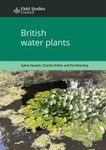![Aquatic Ecosystems: Interactivity of Dissolved Organic Matter Aquatic Ecosystems: Interactivity of Dissolved Organic Matter]()
Click to have a closer look
About this book
Contents
Related titles
About this book
Aquatic Ecosystems explains the interplay between various movements of matter and energy through ecosystems mediated by Dissolved Organic Matter. This book provides information on how much DOM there is in a particular aquatic ecosystem and where it originates. It explains whether the DOM composition varies from time to time and place to place. It also details how DOM becomes incorporated into microbial food webs, and gives a better, clarifying, understanding to its significance of DOM. Dissolved Organic Matter (called DOM) is incredibly important in all aquatic ecosystems. Although it might seem that logs and leaves are more important, in fact the DOM is more crucial because the DOM is in a form that is available for use by all the organisms living in the the water. Furthermore, DOM influences complex food webs by mediating the availability of aquatic nutrients, metals, salts and minerals. DOM also affects water clarity, which of course has alters the way animals and plants live and feed in the water. There are many ways to study DOM and this book focuses on several central questions. How much DOM is there in a particular aquatic ecosytem? Where does it come from? Does the composition of the DOM vary from time to time and place to palce? How does DOM become incorporated into microbial food webs, which are the basis of plant, invertebrate and vertebrate food webs? How can the answers to these and other questions about DOM be considered together so that a better understanding of the significance of DOM can emerge?
Contents
Preface. Section I: Sources and Composition Supply of DOM to Aquatic Ecosystems: Autochthonous Sources. Sources, Production and Regulation of Allochthonous Dissolved Organic Matter Inputs to Surface Waters. Trace Organic Moieties of Dissolved Organic Material in Natural Waters. The Role of Monomers in Stream Ecosystem Metabolism. Molecular Indicators of the Bioavailability of Dissolved Organic Matter. Large-Scale Patterns in DOC Concentration, Flux, and Sources. The Speciation of Hydrophobic Organic Compounds by Dissolved Organic Matter. Elemental Complexation by Dissolved Organic Matter in Lakes: Implications for Fe Speciation and the Bioavailability of Fe and P. Section II: Transformation and Regulation The Contribution of Monomers and Other Low Molecular Weight Compounds to the Flux of DOM in Aquatic Ecosystems. Photochemically-Mediated Linkages Between Dissolved Organic Matter and Bacterioplankton. The Importance of Organic Nitrogen Production in Aquatic Systems: A Landscape Perspective. The Role of Biofilms in the Uptake and Transformation of Dissolved Organic Matter. Microbial Extracellular Enzymes and Their Role in DOM Cycling. Linkages between DOM Composition and Bacterial Community Structure. Bacterial Response to Variation in Dissolved Organic Matter. Section III: Approaches to Synthesis Physiological Models in the Context of Microbial Food Webs. Patterns in DOM Iability and Consumption across Aquatic Systems. Integrating DOM Metabolism and Microbial Diversity: An Overview of Conceptual Models. Dissolved Organic Carbon: Detrital Energetics, Metabolic Regulators, and Drivers of Ecosystem Stability of Aquatic Ecosystems. Synthesis.
Customer Reviews
Out of Print
Edited By: Stuart EG Findlay and Robert L Sinsabaugh
512 pages, Figs, tabs
This book is a must have for researchers and graduate students who wish to be more familiar with DOM cycling...The editors have done an excellent job of gathering together a group of DOM experts and compiling their expertise into a book whose worth extends beyond DOM research...provides a wealth of information that is nicely organized, condensed, and critically examined. (E.F. Benfield, Department of Biology, Virginia Tech, September 2004) "...is well structured, easy to understand, and has a reasonable amount of well-illustrated graphics...these features make the book suitable not only for specialists working in the field, but also for 'beginners,' graduate students, or those who simply want to learn more about the complex world of DOM...is an important contribution to the existing body of literature on DOM...highly recommended to anyone interested in DOM and suggest it as a valuable selection for university libraries."-JOURNAL OF EXPERIMENTAL MARINE BIOLOGY AND ECOLOGY (July 2003) "...this book is ideal for researchers and upper level students (MSc/PhD) who wish to be more familiar with the freshwater 'side' of DOM cycling."-EGU NEWSLETTER (Winter 2003)






















![Coraux Constructeurs de Récifs des Caraïbes [Coral Reef Builders of the Caribbean]](http://mediacdn.nhbs.com/jackets/jackets_resizer_medium/24/249211.jpg?height=150&width=99)














